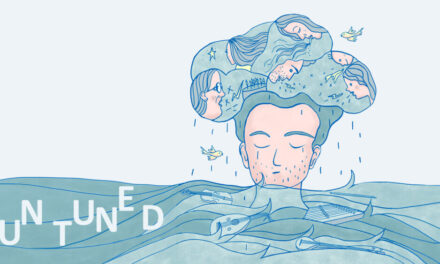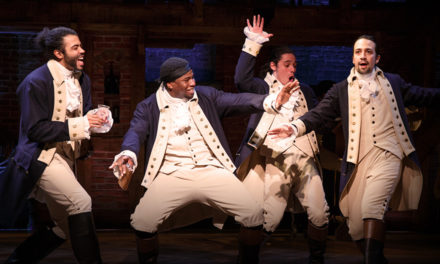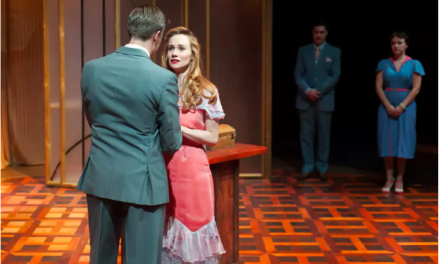Montreal, Québec
Willow Whitereviews Daughter Product’s production of A Dyke’s Guide To Fair Play in the Montreal Fringe Festival:
Darkness falls on the stage as Lady Gaga’s 2010 smash hit Telephone begins to play. Two performers—Emelia Hellman and Ross Wegscheider—dressed in matching black suits begin a choreographed dance to the music. Their facial expressions are blank and their movements wooden, but as the music plays they strip their suits to reveal brightly colored outfits. The audience cheers as multi-colored strobe lights (courtesy of Darah Miah) begin to flash and the dancers twerk and grind.
Merging sound, video, dance, and lighting effects, A Dyke’s Guide To Fair Play is a fully immersive multi-media performance that wades into tricky ideological territory. Historically, it has not always been safe, or even legal, for LGBTQ+ folks to express their sexual interest or desire publicly, and non-verbal cues had to be relied on. With the complexity of communication and desire in mind, A Dyke’s Guide To Fair Play focuses attention on dynamics of consent within the Queer community.
Sarah Culkin and Natalie Liconti. Photo courtesy of Daughter Product
The performance transitions to a dystopic gameshow led by a creepy disembodied voice (Darragh Mondoux). The two contestants, played by Sarah Culkin and Natalie Liconti, are dressed in black suits. When either speaks into the mic to answer a question their voice is distorted into a man’s low tenor. They choose questions from gendered categories like “Name that dude” and “Sensible pick-up lines” and struggle to answer many simple questions related to gender and consent. The results are highly comedic with a clever undertone, offering not just a mockery of toxic masculinity but also a critique of how the importance of consent—highlighted by the #MeToo movement—has largely been represented as a straight/cis problem rather than one that also impacts Queer people.
At one point, a game of Twister is played by three performers (Jess Rae, Meagan Schroeder, and Maryline Chery) as club music thumps in the background and lights flash. Their bodies curve and balance around one another forming a perfect visual representation of the sometimes-messy relationship between desire and consent.
In large part, the success of the performance is owed to sound and video designer Joseph Browne’s creative integration of video clips of famous icons—Cher, David Bowie, Meryl Streep—alongside Queer anthems like Madonna’s Vogue. While A Dyke’s Guide To Fair Play raises tough questions, these multi-media elements ultimately emphasize a celebration of Queer life and love.
In an interview after the performance, creator Natalie Liconti explains that her intention with A Dyke’s Guide To Fair Play is to explore consent in an ironic and comedic way.
“I thought, what is the most inappropriate way to talk about rape culture? A gameshow? Awesome, let’s do that,” says Liconti.
By distancing her audience from the seriousness of the play’s subject matter, Liconti and her team are able to create a performance that is thought-provoking, clever, and wildly funny.
A Dyke’s Guide To Fair Play runs at the Montreal Fringe Festival from June 8-17, 2018. For more information about future performances follow Daughter Product’s website.
This article originally appeared in Alt Theatre on June 19, 2018, and has been reposted with permission.
This post was written by the author in their personal capacity.The opinions expressed in this article are the author’s own and do not reflect the view of The Theatre Times, their staff or collaborators.
This post was written by Willow White.
The views expressed here belong to the author and do not necessarily reflect our views and opinions.

















